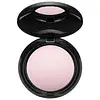Bobbi Brown Under Eye Corrector Versus Pat McGrath Labs Skin Fetish Sublime Perfection Blurring Under Eye Powder
What's inside
What's inside
 Key Ingredients
Key Ingredients

 Benefits
Benefits

 Concerns
Concerns

 Ingredients Side-by-side
Ingredients Side-by-side

Petrolatum
EmollientOctyldodecyl Stearoyl Stearate
EmollientBis-Diglyceryl Polyacyladipate-2
EmollientMethyl Methacrylate Crosspolymer
Tribehenin
EmollientKaolin
AbrasiveSilica
AbrasivePolyethylene
AbrasiveTocopheryl Acetate
AntioxidantLecithin
EmollientPolysorbate 20
EmulsifyingTocopherol
AntioxidantPropylene Glycol Stearate
Skin ConditioningTetrahexyldecyl Ascorbate
AntioxidantMicrocrystalline Wax
Emulsion StabilisingSorbitan Laurate
EmulsifyingCaprylyl Glycol
EmollientPropylene Glycol Laurate
Skin ConditioningCI 77891
Cosmetic ColorantIron Oxides
CI 77007
Cosmetic ColorantMica
Cosmetic ColorantPetrolatum, Octyldodecyl Stearoyl Stearate, Bis-Diglyceryl Polyacyladipate-2, Methyl Methacrylate Crosspolymer, Tribehenin, Kaolin, Silica, Polyethylene, Tocopheryl Acetate, Lecithin, Polysorbate 20, Tocopherol, Propylene Glycol Stearate, Tetrahexyldecyl Ascorbate, Microcrystalline Wax, Sorbitan Laurate, Caprylyl Glycol, Propylene Glycol Laurate, CI 77891, Iron Oxides, CI 77007, Mica
Synthetic Fluorphlogopite
Silica
AbrasiveCaprylic/Capric Triglyceride
MaskingOctyldodecyl Stearoyl Stearate
EmollientMica
Cosmetic ColorantZea Mays Starch
AbsorbentSerica Powder
Skin ConditioningDehydroacetic Acid
PreservativeGlyceryl Caprylate
EmollientEthylhexylglycerin
Skin ConditioningXanthan Gum
EmulsifyingAluminum Hydroxide
EmollientMaltodextrin
AbsorbentTocopherol
AntioxidantCI 77163
Cosmetic ColorantCI 77491
Cosmetic ColorantCI 75470
Cosmetic ColorantIngredients Explained
These ingredients are found in both products.
Ingredients higher up in an ingredient list are typically present in a larger amount.
Mica is a naturally occurring mineral used to add shimmer and color in cosmetics. It can also help improve the texture of a product or give it an opaque, white/silver color.
Serecite is the name for very fine but ragged grains of mica.
This ingredient is often coated with metal oxides like titanium dioxide. Trace amounts of heavy metals may be found in mica, but these metals are not harmful in our personal products.
Mica has been used since prehistoric times throughout the world. Ancient Egyptian, Indian, Greek, Roman, Aztec, and Chinese civilizations have used mica.
Learn more about MicaOctyldodecyl Stearoyl Stearate is created from stearic acid.
It is an emollient and thickens the lipid (oil) portion of a product. Due to its emollient properties, it may not be fungal-acne safe.
Silica, also known as silicon dioxide, is a naturally occurring mineral. It is used as a fine, spherical, and porous powder in cosmetics.
Though it has exfoliant properties, the function of silica varies depending on the product.
The unique structure of silica enhances the spreadability and adds smoothness, making it a great texture enhancer.
It is also used as an active carrier, emulsifier, and mattifier due to its ability to absorb excess oil.
In some products, tiny microneedles called spicules are made from silica or hydrolyzed sponge. When you rub them in, they lightly polish away dead skin layers and enhance the penetration of active ingredients.
Learn more about SilicaTocopherol (also known as Vitamin E) is a common antioxidant used to help protect the skin from free-radicals and strengthen the skin barrier. It's also fat soluble - this means our skin is great at absorbing it.
Vitamin E also helps keep your natural skin lipids healthy. Your lipid skin barrier naturally consists of lipids, ceramides, and fatty acids. Vitamin E offers extra protection for your skin’s lipid barrier, keeping your skin healthy and nourished.
Another benefit is a bit of UV protection. Vitamin E helps reduce the damage caused by UVB rays. (It should not replace your sunscreen). Combining it with Vitamin C can decrease sunburned cells and hyperpigmentation after UV exposure.
You might have noticed Vitamin E + C often paired together. This is because it is great at stabilizing Vitamin C. Using the two together helps increase the effectiveness of both ingredients.
There are often claims that Vitamin E can reduce/prevent scarring, but these claims haven't been confirmed by scientific research.
Learn more about Tocopherol